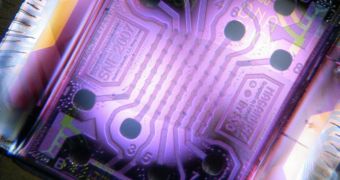Testing and developing new drug could become a lot easier and faster in the future, thanks to the advancements made by a team of researchers from the Stanford University, in the US. Scientists here developed a new biosensor microchip that can be used for drug development research.
Each of the new microchips contains an estimated 100,000 magnetically sensitive nanosensors, each of which is capable of determining how specific proteins bind to each other, or to substrates.
Learning this is one of the most fundamental aspects of designing new chemicals against a varied array of disorders, investigators say. What makes the new chip much more advanced than any other on the market today is its ability to study several thousand more proteins at once than any of its competitors.
In addition to determining which chemical combination makes the best drugs for a particular disease, the new microchip will also make it possible to determine whether administering the new substance to a patient during therapy will have any side effects.
“You can fit thousands, even tens of thousands, of different proteins of interest on the same chip and run the protein-binding experiments in one shot,” explains Shan Wang, the leader of the study.
He holds an appointment as a professor of materials science, of engineering and of electrical engineering at Stanford. “In theory, in one test, you could look at a drug's affinity for every protein in the human body,” adds colleague Richard Gaster, MD.
The expert, who is also the first author of the new paper, is a PhD candidate in bioengineering and medicine at the university. Details of the work have already been published online in the journal Nature Nanotechnology, and are also scheduled to be published in the print issue of the same magazine.
“I think their technology has the potential to revolutionize how we do bioassays,” explains P.J. Utz, who is a Stanford Medical Center associate professor of immunology and rheumatology. He was not a part of the team that led the new work.
The first time the magnetic nanoscale sensor technology was presented was back in 2009, when a paper detailing how it operates was published in the journal Nature Medicine.
After spending the mean time improving on the technology, the team is now confident that the sensors can be seamlessly integrated inside the new microchips, for optimum results. Already, the approach is proving to be faster than any other out there.

 14 DAY TRIAL //
14 DAY TRIAL //